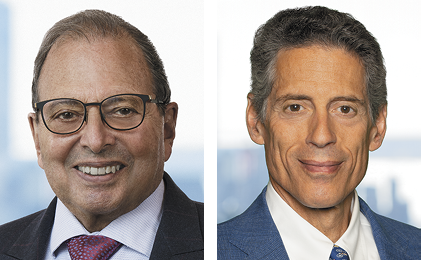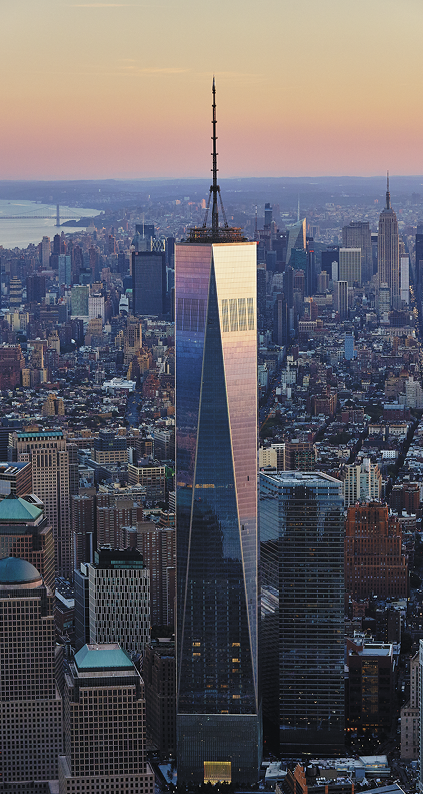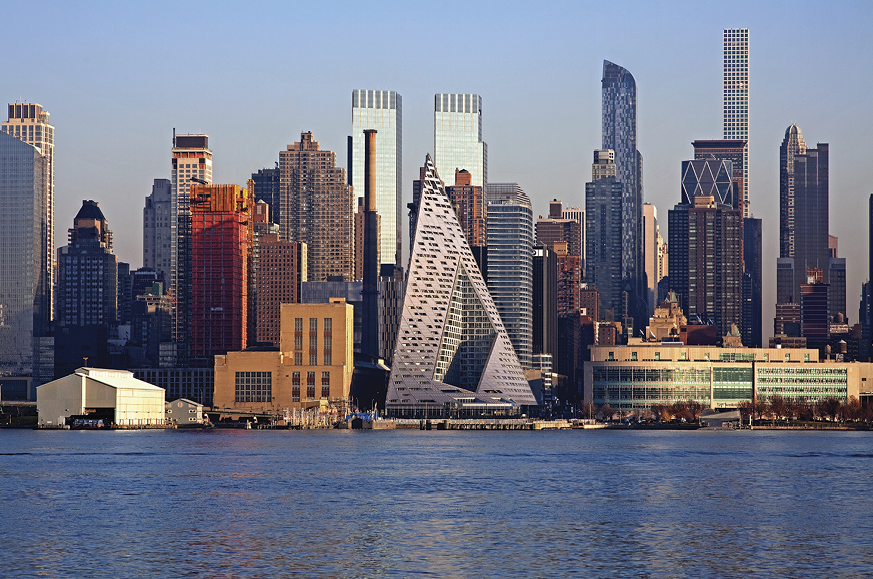- Home
- Media Kit
- MediaJet
- Current Issue
- Past Issues
- Ad Specs-Submission
- Reprints (PDF)
- Photo Specifications (PDF)
- Contact Us
- PRIVACY POLICY
- TERMS OF USE
![]()
ONLINE
![]()
ONLINE


Douglas Durst and Jonathan (Jody) Durst
Long-Term Owners
Editors’ Note
Douglas Durst is the Chairman and a member of the third generation to lead The Durst Organization. He joined The Durst Organization in 1968, learning the business from his father, Seymour, and two uncles, Roy and David. Durst recently completed a term as chair of the Real Estate Board of New York, and is a board member of The New School, and a trustee emeritus of The Trust for Public Land. He has been involved with the theatrical arts for many years and is a member of the board of directors of The Roundabout Theater and Primary Stages. In addition, he has been an environmental activist for many years and founded The Model Organic Farm Foundation, a nonprofit organization that operates one of the largest organic farms in New York State. Durst graduated from the Fieldston School and the University of California Berkeley.
Jonathan (Jody) Durst is the President of The Durst Organization. He started his career with The Durst Organization in 1984 in the construction department. He then moved on to directing the operations of the commercial portfolio and supervising new construction projects in midtown Manhattan. In conjunction with these responsibilities, he oversaw contract negotiations with tradesmen and vendors, and lease negotiations with prospective tenants. He also directed the investigation and application of energy-efficient and environmentally responsible technologies for The Durst Organization. In 2005, Durst joined his cousin, Douglas, as leaders of The Durst Organization and, under their leadership, the company built the nation’s first sustainable skyscraper, 151 West 42nd Street, and the first LEED Platinum high-rise office tower, the Bank of America Tower at One Bryant Park. Today, Durst oversees the management and operations of a 13 million square foot office portfolio, including One World Trade Center, and 3,400 residential rental units. Before joining The Durst Organization, he worked as Engine Performance Engineer for the Chrysler Corporation and as a Research and Development Engineer for FMC, within a division that manufactured large diesel tractors. Durst graduated from Tufts University with a degree in mechanical engineering.
Company Brief
The Durst Organization (durst.org), founded in 1915 by Joseph and Rose Durst, is the owner, manager, and builder of 13 million square feet of premier Manhattan office towers and over three million square feet of residential rental properties, with 3,400 rental apartments built and several thousand units in the pipeline. The Durst Organization is recognized as a world leader in the development of high-performance and environmentally advanced commercial and residential buildings where people live, work, and thrive.

One World Trade Center
What have been the keys to Durst’s industry leadership?
: My grandparents, Joseph and Rose Durst, founded The Durst Organization with the philosophy of “leave each place better than you found it.” This belief has driven our work for generations. We create buildings with a focus on sustainability in which people live, work, and thrive. As long-term owners, we continually invest in our properties to offer high-quality spaces and services for our tenants and residents.
How do you describe Durst’s culture and how important has it been to maintain a family feel at the company?
: Our culture is centered around our core values: integrity, relationships, long-term perspective, loyalty, proactivity, agility, and innovation.
Everyone is very collegial, professional, and treats each other with respect, which I like to think stems from being a family business.
What are your views on the state of the commercial real estate market in New York City?
: The commercial real estate market has rebounded significantly, especially the top tier of the market. The Durst Organization owns and operates 13 million square feet of Class A and A+ commercial office towers and we have a lower vacancy rate today than we did in 2019. That’s true of our flagship properties like One Bryant Park, which is 100 percent leased, and One World Trade Center, which is 95 percent leased, as well as our older properties in which we have continuously invested to maintain their appeal to tenants.
At many of our properties, we’re seeing more space leased and higher net-effective rents. In 2023, we leased over one million square feet – the highest level of leasing during the past eight years, except for 2018 which was slightly higher.
Hybrid work has not impacted this leasing momentum. Our tenants do not lease space by the day. Companies want to show their employees that they are investing in them with a high-quality office space whether they are in-person three, four, or five days per week.

VIA 57 WEST
What is your leasing outlook for 2024?
: The New York City office market entered 2024 with more predictability and stronger fundamentals than at any time since the pandemic. A CBRE report recently found that the high-end of the market is impervious to the woes that the lower tier is facing, based on the number of 2023 lease transactions at $100 per square foot or more. Another report, from JLL, identified Midtown Manhattan as a bright spot where more than 90 percent of top-tier leasing activity occurred in Q4 2023.
While continuing to promote the benefits of in-person work is important, the main challenge currently facing commercial owners and operators isn’t convincing tenants to return to in-office work. The bigger challenge is getting the banks and regulators to recognize the strength and proven rebound of the top of the commercial market. Banks have significantly pulled back lending for real estate without distinguishing between the successful top-tier sector of the market and challenging sectors. Real estate is suddenly viewed as a monolith when it is not and never has been, and this is hurting New York City.
Will you provide an overview of Durst’s complete repositioning of an older office tower, 825 Third Avenue, and what tenants can expect from this office tower transformation?
: 825 Third Avenue looks and feels like a brand-new tower. At the end of a 25-year triple-net-lease, we completely emptied the 530,000-square-foot building and embarked on a $150 million capital improvement program focused on tenant comfort, building performance, modern aesthetics, and sustainability. This transformation earned us a LEED Gold certification – no easy feat for an older office tower.
The show-stopper is a full-floor tenant amenity space. Our Well& by Durst space at 825 Third Avenue offers indoor and outdoor spaces for meetings, special events, and socializing. We pre-leased 35 percent of the building last year before the work was even done.
What are the key characteristics that tenants are looking for in their office space?
: Tenants are looking for quality office spaces that are located near public transit and assets that have been well-maintained and invested in over time. We take maintaining our properties very seriously, and we don’t just mean sweeping the floors. We continually make investments in our properties to improve them. 1155 Avenue of the Americas is a great example. It’s a 1980s building that was doing well. When a very large tenant moved out, we saw an opportunity to invest $130 million to reposition the building. We created a new lobby, installed new elevators, added outdoor space, and put in new windows to create better views and increase efficiency. Our approach to long-term planning and investment is consistent throughout the portfolio, and it has paid off.
With the flight to quality, tenants also prioritize experiences and convenience for their employees. We offer a calendar of special events for tenants and residents, discounted rent at our residential properties if you work in a Durst building, and perks from our retail partners. This approach creates places where people want to come to work and supports talent attraction and retention.
Will you discuss some of Durst’s residential projects that are under construction?
: While the majority of our portfolio is commercial, over the past two decades we have developed some of the most recognizable residential properties in New York City including the 57 WEST campus. VIA 57 WEST, designed by Bjarke Ingels, has a 22,000-square-foot interior courtyard garden that is an oasis in the city. On West 31st Street, we built EOS, offering hospitality-focused amenities and the convenience of being within five blocks of Amtrak, the PATH, and 15 subway lines.
In addition to Manhattan, we have been developing in Queens. We are currently under construction at 20 and 30 Halletts Point, the second major phase of our Halletts Point residential development along the Astoria waterfront. When the development opens next year, 20 and 30 Halletts Point will bring 647 units of mixed-income housing to Astoria along with public waterfront open space and neighborhood retail. Northwestern Queens is one of the most desirable and fastest growing areas in New York City right now, and we are proud to be delivering new housing and amenities for the neighborhood.
What do you feel should be done to address the need for housing in New York City?
: The housing market in New York City is broken. Demand is high, supply is limited, and there is a scarcity of units available to renters of all incomes. New York City’s rental vacancy rate recently reached a historic low of 1.4 percent.
A long-term issue is that New York’s tax burden falls unfairly on residential multifamily rental buildings. One-third of all rental revenue goes to City taxes. Then, in 2022, a program called 421-a, which provided tax incentives for rental projects, expired. At the same time, construction costs, insurance, and many other development expenses increased dramatically. As a result, rental housing construction has fallen off a cliff.
Lawmakers need to provide incentives to boost the creation of new rental housing, expand access to housing vouchers, and reject any new restrictions on the rental market that would stifle new development.
Will you highlight Durst’s commitment to sustainability?
: Sustainability is at the core of our approach to development and operations. We are committed to implementing industry-leading sustainability measures and to creating healthy spaces where people live and work. We design our buildings to be highly energy-efficient, to conserve water, and to reduce waste. Our entire commercial portfolio is certified LEED Gold or higher.
A few examples: Our in-house sustainability team is very selective about the materials we build with. We ensure our wood products are certified by the Forest Stewardship Council. That means the wood was sustainably harvested to minimize the impact on surrounding wildlife. Across our portfolio, we have offered organics collection for composting long before New York and other cities introduced mandates. Additionally, we look for new technologies that will help reduce energy usage and increase resident comfort. We have deployed View Glass Smart Windows at some of our residential and commercial properties which reduce our carbon footprint and provide access to natural light and unobstructed views of New York City.
With all that Durst has achieved, are you able to enjoy the process and take moments to celebrate the wins?
: When you are caught up in the day to day, finding time to celebrate the wins can be difficult. I am proud of everything that our team has achieved. From big milestones, such as the topping out ceremony at 20 and 30 Halletts Point last year, to a work anniversary, I hope that a sense of pride is instilled in the work that we do, and that we are living up to our mission of leaving each place better than we found it.![]()